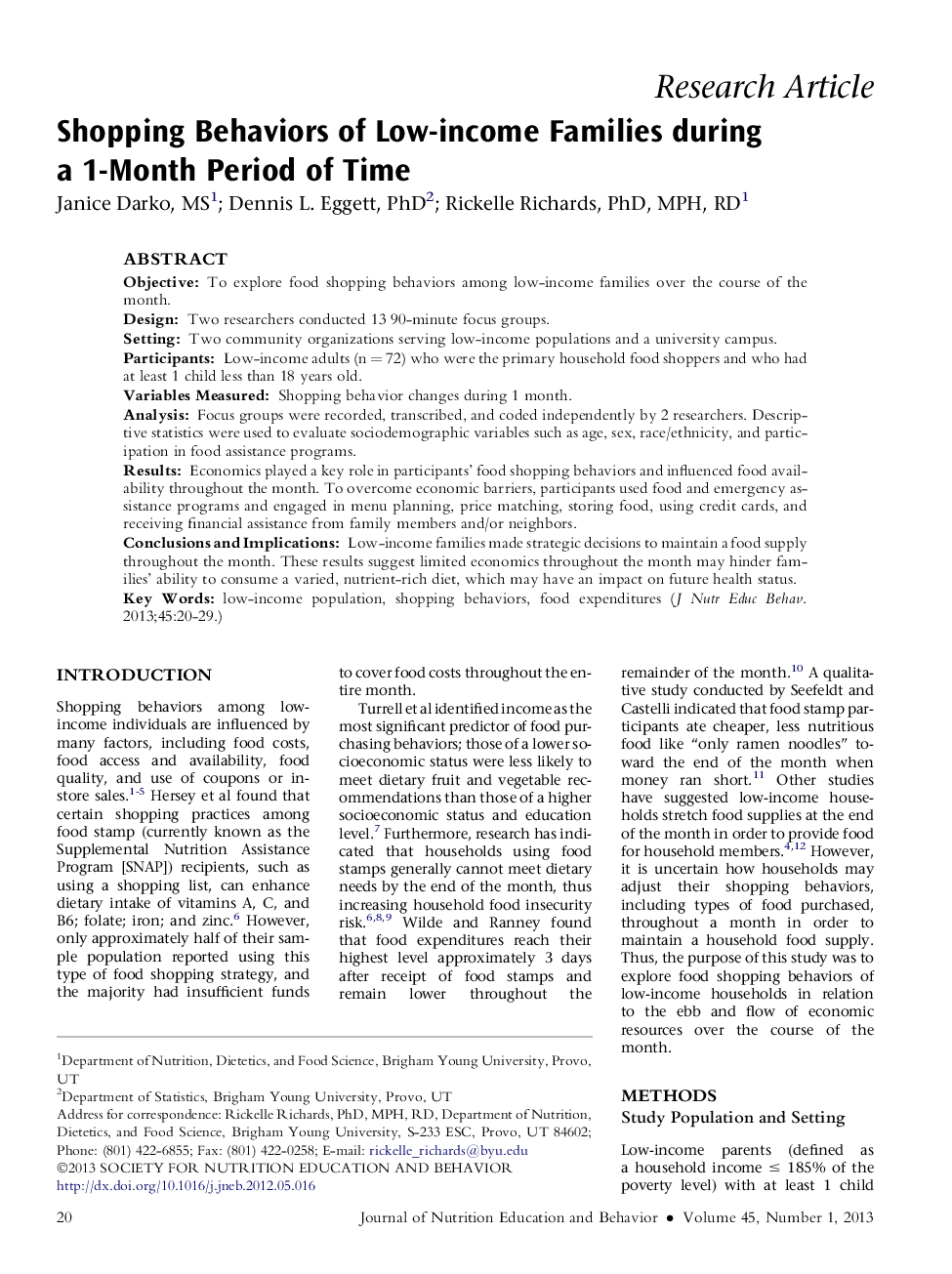| Article ID | Journal | Published Year | Pages | File Type |
|---|---|---|---|---|
| 361621 | Journal of Nutrition Education and Behavior | 2013 | 10 Pages |
ObjectiveTo explore food shopping behaviors among low-income families over the course of the month.DesignTwo researchers conducted 13 90-minute focus groups.SettingTwo community organizations serving low-income populations and a university campus.ParticipantsLow-income adults (n = 72) who were the primary household food shoppers and who had at least 1 child less than 18 years old.Variables MeasuredShopping behavior changes during 1 month.AnalysisFocus groups were recorded, transcribed, and coded independently by 2 researchers. Descriptive statistics were used to evaluate sociodemographic variables such as age, sex, race/ethnicity, and participation in food assistance programs.ResultsEconomics played a key role in participants’ food shopping behaviors and influenced food availability throughout the month. To overcome economic barriers, participants used food and emergency assistance programs and engaged in menu planning, price matching, storing food, using credit cards, and receiving financial assistance from family members and/or neighbors.Conclusions and ImplicationsLow-income families made strategic decisions to maintain a food supply throughout the month. These results suggest limited economics throughout the month may hinder families’ ability to consume a varied, nutrient-rich diet, which may have an impact on future health status.
